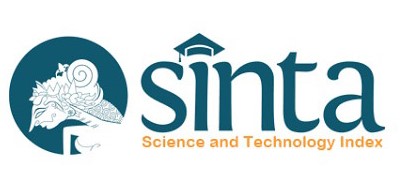Neuroanesthesia Management in Transspenoidal Pituitary Cyst Surgery
Abstract
Background: Neuroanesthesia management of patients with masses in the sella area undergoing transspenoidal surgery is a challenge for anesthesiologists. Good preoperative, intraoperative and postoperative management is shown to improve the patient’s quality of life.
Case: A 45-year-old man with chief complaints of headache and visual disturbances, from the results of the vision examination obtained visus 1/60 (count fingers) and narrowed visual field area. From computerized tomography (CT) scan and Magnetic resonance imaging (MRI) images of the Head obtained a picture of cystic mass of the suprasellar sella pressing the optic chiasm. The patient was planned for surgical excision of pituitary cyst per transspenoidal. The patient underwent general anesthesia with endotracheal intubation with intravenous induction fentanyl, propofol, atracurium and lidocaine, followed by maintenance with sevoflurane inhalation agent with 60% oxygen. During the operation the hemodynamic condition was stable and postoperatively the patient was extubated in the operating room and then treated in the intensive care unit.
Conclusion: In pituitary cyst patients undergoing transspenoidal surgery, the preoperative evaluation is mainly aimed at airway assessment, neurological disorders and hormonal disorders in patients. During intraoperative, the anesthesiologist is expected to optimize cerebral oxygenation, maintain hemodynamic stability, facilitate the surgical area, prevent and manage intraoperative complications and rapid recovery of consciousness. Postoperatively a good neuroendocrine evaluation is required
Keywords
Full Text:
PDFReferences
Dunn LK, Nemergut EC. Anesthesia for transsphenoidal pituitary surgery. Curr Opin Anaesthesiol. 2013;26(5):549-554.
Cote DJ, Iuliano SL, Catalino MP, Laws ER. Optimizing pre-, intra-, and postoperative management of patients with sellar pathology undergoing transsphenoidal surgery. Neurosurg Focus. 2020;48(6):E2.
Mosca S, Paolillo S, Colao A, et al. Cardiovascular involvement in patients affected by acromegaly: an appraisal. Int J Cardiol. 2013;167(5):1712-1718.
Cafiero T, Cavallo LM, Frangiosa A, et al. Clinical comparison of remifentanil-sevoflurane vs. remifentanil-propofol for endoscopic endonasal transphenoidal surgery. Eur J Anaesthesiol. 2007;24(5):441-446.
Ghofar RPC, Nofiyanto E, Laksono BH. Diabetes insipidus in a patient with a postoperative pituitary tumor. Jurnal Neuroanestesi Indonesia. 2023;12(3): 159-168.
Daly SC, Drummond JC. The Pituitary Gland and Associated Pathologic Status. In: Cottrel and Patel’s Neuroanesthesia. 6th ed. USA. Elsvier Inc; 2017: 458 - 467
Fatti LM, Scacchi M, Pincelli AI, et al. Prevalence and Pathogenesis of Sleep Apnea and Lung Disease in Acromegaly. Pituitary. 2001;4:259–262.
Hurley DM, Ho KK. MJA Practice Essentials--Endocrinology. 9: Pituitary disease in adults. Med J Aust. 2004;180(8):419-425.
Berg C, Petersenn S, Lahner H, et al. Cardiovascular risk factors in patients with uncontrolled and long-term acromegaly: comparison with matched data from the general population and the effect of disease control. J Clin Endocrinol Metab. 2010; 95:3648–3656.
Coulden A, Hamblin R, Wass J, Karavitaki N. Cardiovascular health and mortality in Cushing's disease. Pituitary. 2022;25(5):750-753.
Smith M, Hirsch NP. Pituitary disease and anaesthesia. Br J Anaesth. 2000;85:3–14.
Nemergut EC, Dumont AS, Barry UT, Laws ER. Perioperative management of patients undergoing transsphenoidal pituitary surgery. Anesth Analg. 2005;101(4):1170-1181.
Vance ML. Perioperative management of patients undergoing pituitary surgery. Endocrinol Metab Clin North Am. 2003;32(2):355-365.
Ali Z, Prabhakar H, Bithal PK, Dash HH. Bispectral index-guided administration of anesthesia for transsphenoidal resection of pituitary tumors: a comparison of 3 anesthetic techniques. J Neurosurg Anesthesiol. 2009;21:10 – 15.
Carr AC. Diabetes Insipidus and Other Polyuric Syndrome. In : Oh’s Intensive Care Manual. 8th ed. China. Elsevier Inc;2019:739 – 756.
DOI: http://dx.doi.org/10.21776/ub.jap.2024.005.01.03
Refbacks
- There are currently no refbacks.

This work is licensed under a Creative Commons Attribution 4.0 International License.









.png)

